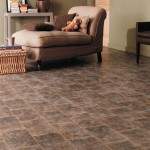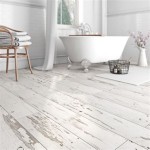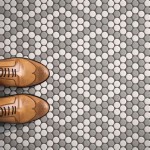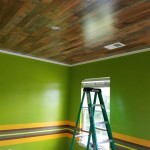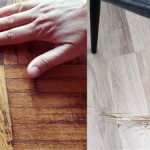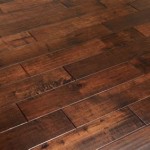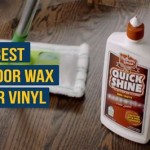Cleaning Linoleum Floors With Vinegar and Baking Soda: A Comprehensive Guide
Linoleum flooring, a resilient and relatively inexpensive option, is a common feature in many homes and commercial spaces. Its durability and versatility make it a popular choice, but like all flooring materials, linoleum requires regular cleaning to maintain its appearance and prevent the build-up of dirt, grime, and stains. While various commercial cleaning products are available, natural alternatives like vinegar and baking soda offer effective and eco-friendly cleaning solutions. This article provides a comprehensive guide on how to clean linoleum floors using vinegar and baking soda, outlining the benefits, procedures, and important considerations for optimal results.
Understanding the composition of linoleum is crucial before embarking on any cleaning process. Linoleum is primarily made from natural materials, including linseed oil, rosin, cork dust, wood flour, and mineral fillers, all pressed onto a burlap or canvas backing. This natural composition makes it generally resilient but also susceptible to damage from harsh chemicals and abrasive cleaners. Therefore, gentler alternatives like vinegar and baking soda are preferred, as they clean effectively without compromising the integrity of the flooring material.
Vinegar, a mild acid, is an excellent natural cleaner and disinfectant. Its acidic properties help to dissolve dirt, grease, and mineral deposits, making it an effective cleaning agent for various surfaces, including linoleum. Baking soda, also known as sodium bicarbonate, is a mild abrasive that can help to scrub away stubborn stains and deodorize the floor. When used in combination, vinegar and baking soda create a powerful cleaning duo that can tackle a wide range of cleaning challenges on linoleum floors.
Benefits of Using Vinegar and Baking Soda
Choosing vinegar and baking soda for cleaning linoleum floors offers several advantages compared to commercial cleaners. Firstly, these are natural, non-toxic ingredients, making them safer for households with children and pets. Commercial cleaners often contain harsh chemicals that can be harmful if ingested or inhaled. Vinegar and baking soda, on the other hand, are biodegradable and environmentally friendly. Secondly, vinegar and baking soda are readily available and relatively inexpensive. They can be found in most grocery stores, making them a convenient and cost-effective cleaning solution. Thirdly, these ingredients are versatile and can be used for various cleaning tasks around the house, not just for linoleum floors.
Additionally, the use of vinegar and baking soda minimizes the risk of damaging the linoleum. Harsh chemicals in some commercial cleaners can strip away the protective finish on the linoleum, leading to dullness and accelerated wear. Vinegar, when diluted properly, is gentle enough to clean linoleum without causing damage. Baking soda, while mildly abrasive, is less harsh than scouring powders and can effectively remove stains without scratching the surface.
Furthermore, vinegar possesses natural deodorizing properties. It can help to eliminate unpleasant odors from the floor, leaving it smelling fresh and clean. Baking soda also contributes to deodorization by absorbing odors. This is particularly beneficial in areas prone to spills and messes, such as kitchens and bathrooms.
Step-by-Step Guide to Cleaning Linoleum Floors
Before starting the cleaning process, it is essential to gather the necessary supplies. This includes white vinegar, baking soda, a bucket, warm water, a mop (preferably a microfiber mop), a soft-bristled brush (optional, for stubborn stains), and a clean towel or cloth for drying the floor.
The first step is to sweep or vacuum the floor thoroughly to remove loose dirt, dust, and debris. This prevents the debris from being spread around during the cleaning process and potentially scratching the linoleum surface. Pay attention to corners and edges where dirt tends to accumulate.
Next, prepare the cleaning solution. In a bucket, mix one cup of white vinegar with one gallon of warm water. The dilution ratio is essential to prevent the vinegar from damaging the linoleum. Avoid using undiluted vinegar, as it can be too acidic and potentially etch the surface.
Dip the mop into the vinegar and water solution, ensuring it is damp but not soaking wet. Excess water can seep into the seams of the linoleum and potentially cause damage over time. Wring out the mop thoroughly before applying it to the floor. Mop the floor in sections, overlapping each stroke to ensure complete coverage. If there are heavily soiled areas, allow the solution to sit on the floor for a few minutes to loosen the dirt.
For stubborn stains or scuff marks, sprinkle a small amount of baking soda directly onto the affected area. Gently scrub the stain with a soft-bristled brush or a damp cloth. Avoid using excessive pressure, as this can scratch the linoleum. The baking soda will act as a mild abrasive, helping to lift the stain without damaging the floor.
Once the floor has been mopped and any stains have been treated, rinse the floor with clean water to remove any remaining vinegar or baking soda residue. Use a clean mop or cloth dampened with water to wipe the floor thoroughly. This step is crucial to prevent a dull film from forming on the linoleum surface.
Finally, dry the floor with a clean towel or cloth. This will help to prevent water spots and streaks. Alternatively, allow the floor to air dry, ensuring adequate ventilation in the room. Opening windows or using a fan can speed up the drying process.
Important Considerations and Precautions
While vinegar and baking soda are generally safe for cleaning linoleum, it is essential to take certain precautions to prevent damage. Always dilute the vinegar with water, as undiluted vinegar can be too acidic and potentially etch the surface. Avoid using abrasive scrub brushes or scouring pads, as these can scratch the linoleum. When using baking soda to remove stains, test it on an inconspicuous area of the floor first to ensure it does not cause discoloration or damage.
Avoid using excessive water when cleaning linoleum floors. Excess water can seep into the seams of the linoleum and potentially damage the underlayment. Always wring out the mop thoroughly before applying it to the floor. If you spill water on the floor, wipe it up immediately.
Regular maintenance is key to keeping linoleum floors clean and in good condition. Sweep or vacuum the floor regularly to remove loose dirt and debris. Clean up spills immediately to prevent stains from setting in. Consider using floor mats or rugs in high-traffic areas to protect the linoleum from wear and tear.
Avoid using harsh chemicals or abrasive cleaners on linoleum floors. These can strip away the protective finish and damage the surface. Always read the labels on cleaning products carefully and follow the manufacturer's instructions.
For deep cleaning, consider using a steam mop. Steam mops use hot steam to clean and sanitize floors without the need for chemicals. However, use caution when using a steam mop on linoleum, as excessive heat can damage the material. Start with a low steam setting and test the mop on an inconspicuous area of the floor first.
To maintain the shine and luster of linoleum floors, consider applying a floor polish or wax specifically designed for linoleum. Follow the manufacturer's instructions for application and maintenance. Regular polishing can help to protect the linoleum from scratches and stains and keep it looking its best.
If you are unsure about using vinegar and baking soda on your linoleum floor, consult with a professional floor cleaning service. They can assess the condition of your floor and recommend the best cleaning methods and products. A professional cleaning service can also provide regular maintenance and repair services to keep your linoleum floor in top condition.
In conclusion, cleaning linoleum floors with vinegar and baking soda provides a safe, effective, and environmentally friendly alternative to commercial cleaners. By following the steps outlined in this guide and taking the necessary precautions, homeowners can maintain the beauty and longevity of their linoleum floors while minimizing the risk of damage.

How To Strip A Linoleum Floor Naturally Real The Kitchen And Beyond

The Best Way How To Clean Linoleum Floors Like A Pro

The Best Way How To Clean Linoleum Floors Like A Pro

How To Clean Linoleum Floors The Maids

How To Deep Clean Linoleum Floors With Your Iron

How To Clean Old Linoleum Hometalk

Cleaning Using Baking Soda And Vinegar Maggy Maid

How To Remove Stains From Vinyl Flooring Care Tips And Tricks

Learn How To Clean Linoleum Floors Naturally Ingredients Cut The Grime

How To Strip A Linoleum Floor Naturally Real The Kitchen And Beyond
Related Posts

